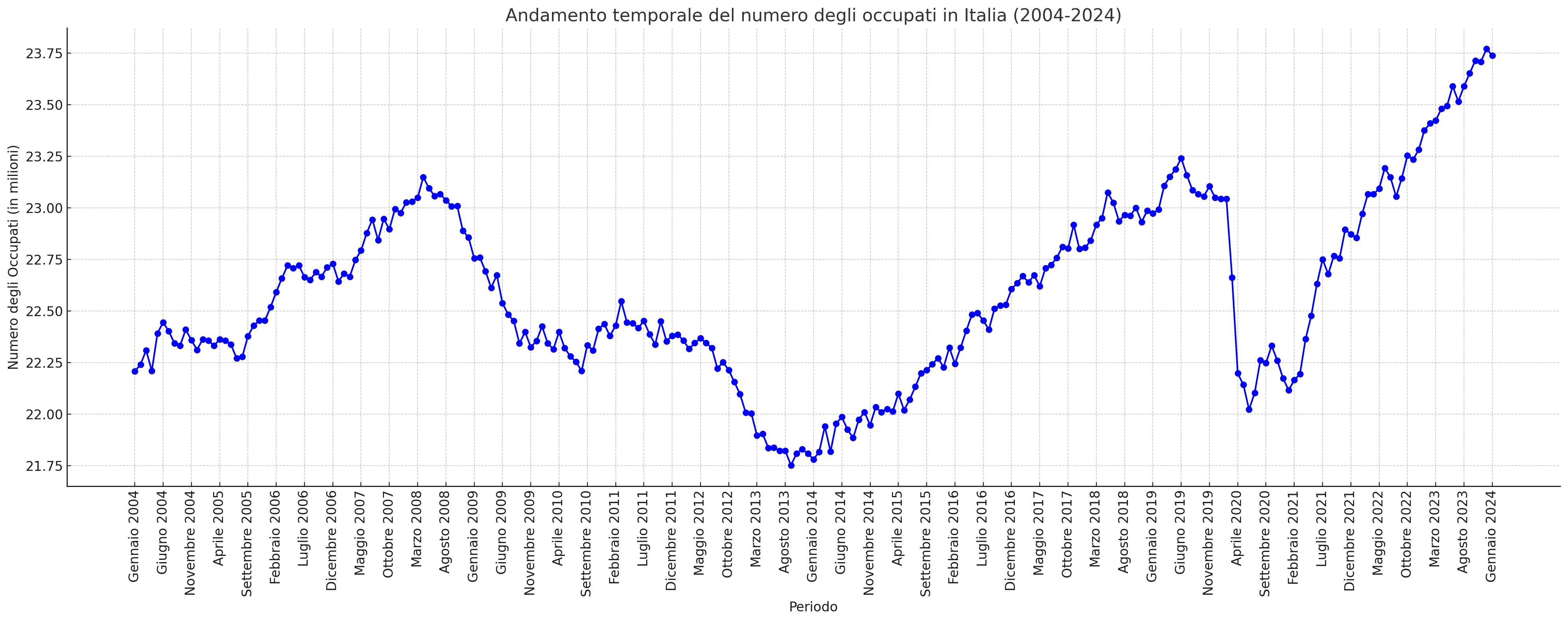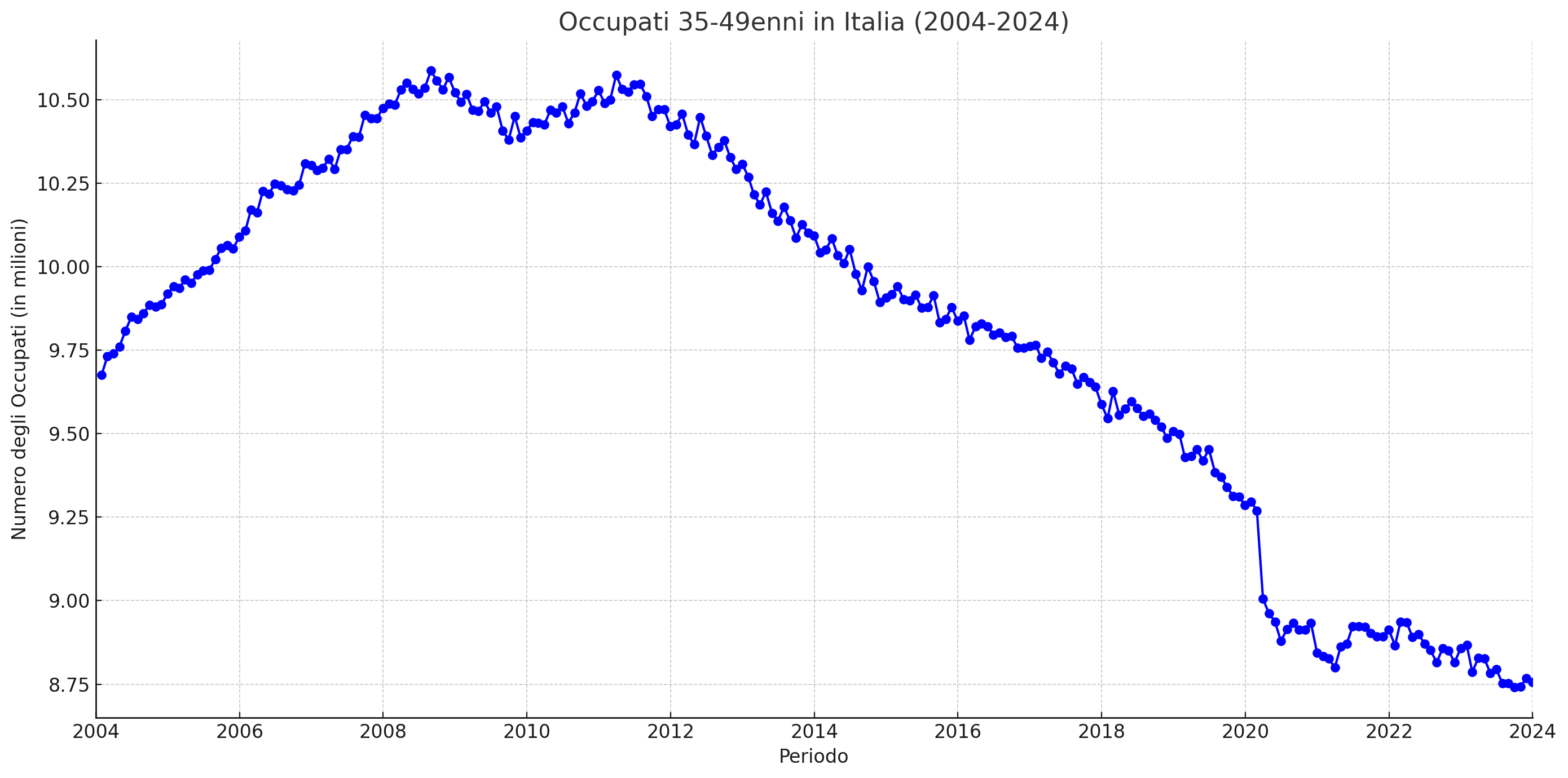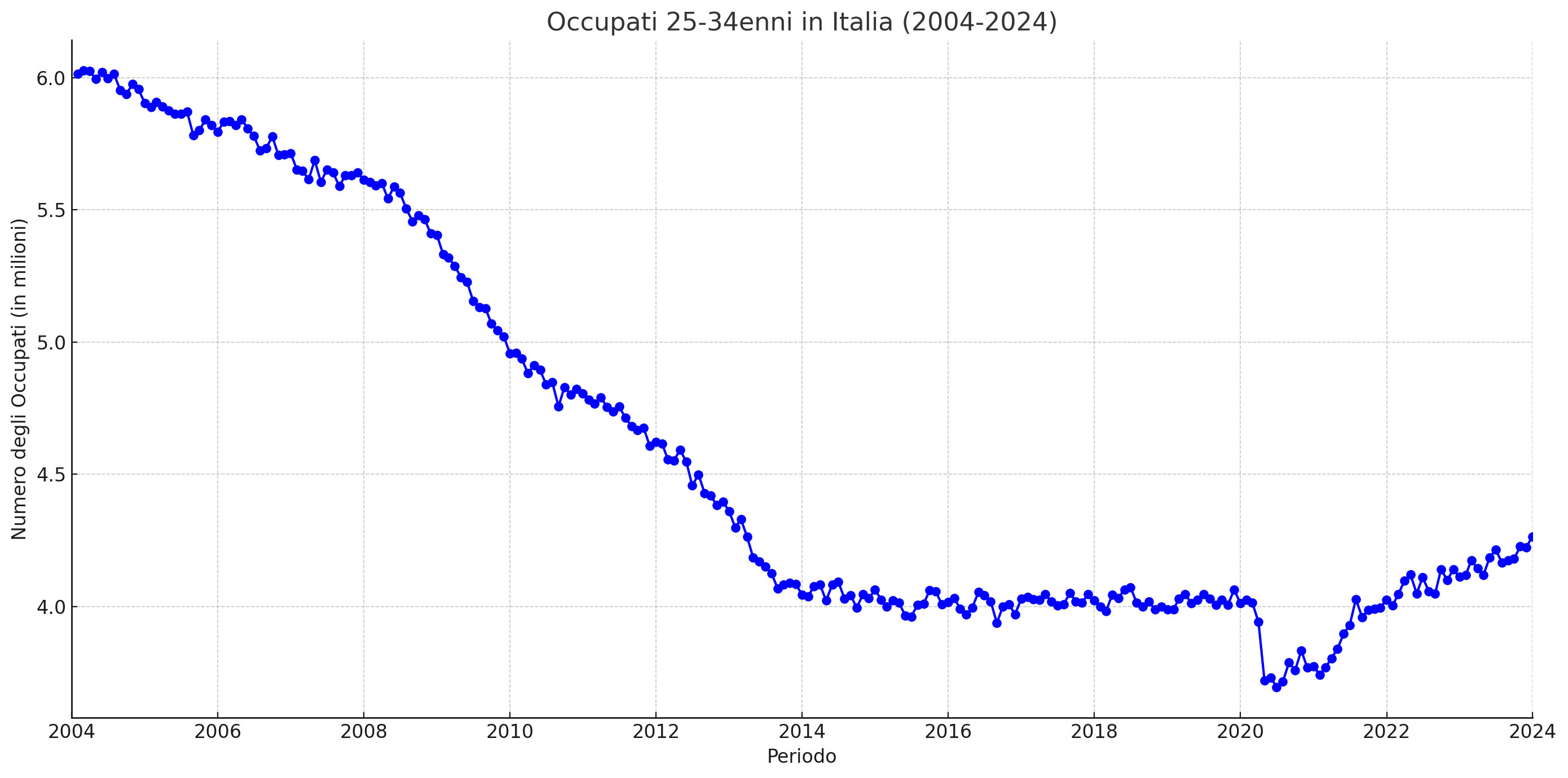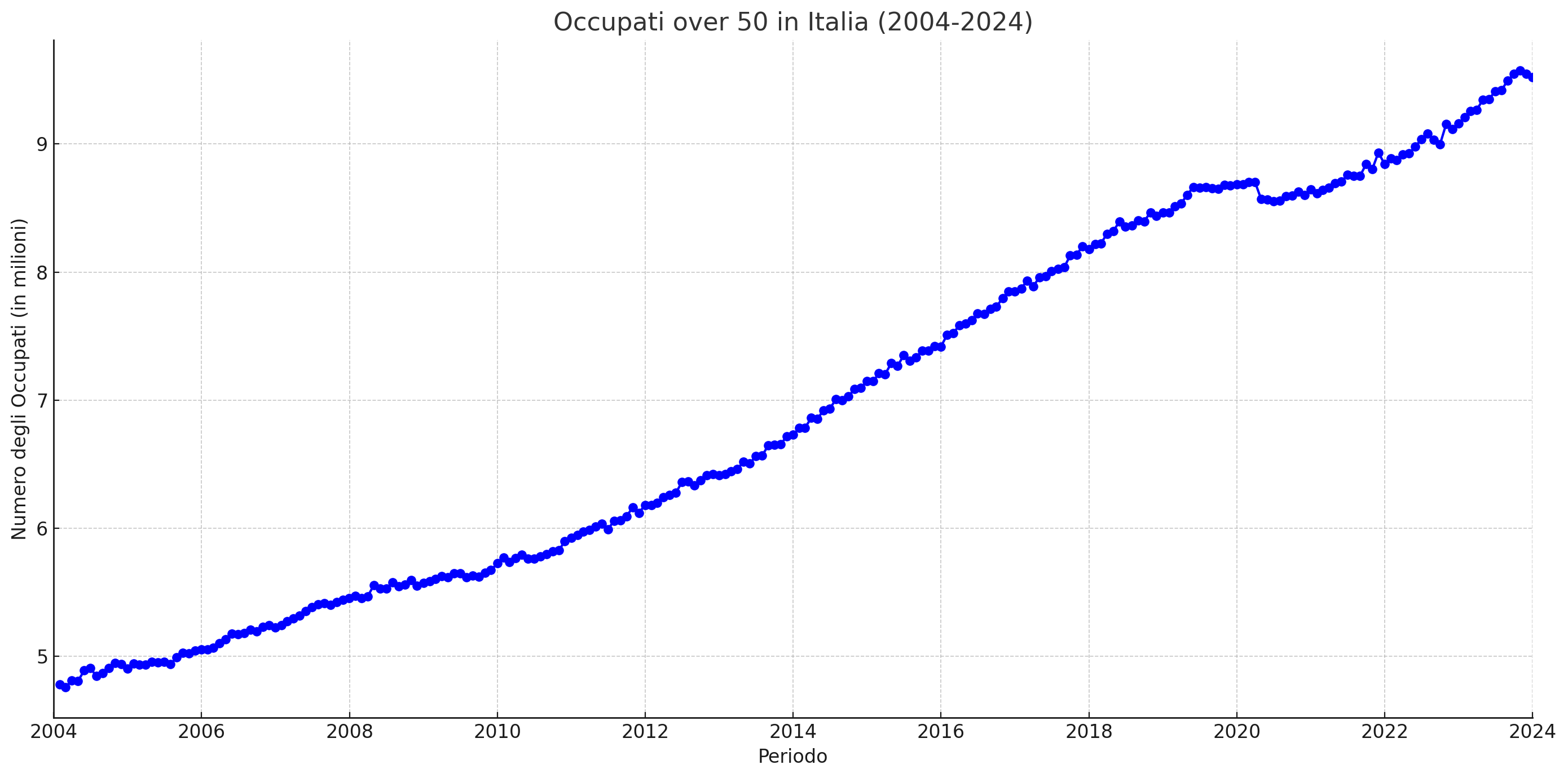Who benefits most from the increase in employment in Italy. Popolocracy Report

There is a fact that should not be underestimated in the (positive) trend in the number of workers in our country. Extract from the analysis of the Popolocracy newsletter
When it comes to demography, in Italy, the vice prevails of conjugating the analyzes carried out on population trends only to the future, as well as the proposed solutions that are put forward. Demography thus becomes a matter for futurologists and scenario planners, at most for apparently far-sighted analysts and politicians, with reasoning such as "here's what will happen if the fertility rate…" or alarms such as "this is what Italy will be like in 2100". In reality, ours is a country with demographic imbalances that profoundly affect, already here and now, the reality that surrounds us. Starting from the job market.
What is the employment situation in Italy today? Is it possible to get a concise and realistic idea of the situation, extricating ourselves from the "information overload", i.e. the "overload" of content and information to which the media exposes us, between data and announcements and political propaganda?
Let's start by asking ourselves how many people are currently employed in our country. According to Istat , in January 2024 there were 23 million 738 thousand. Many or few? A lot, by our standards. Consider that at the beginning of 2008, when we were still on the eve of the Lehman Brothers collapse and the global financial crisis, there were 23 million employed, therefore 700,000 fewer than today. The American financial crisis then turned into a long sovereign debt crisis on our continent, seriously damaging the real economy. In the summer of 2013, employment fell to 21.8 million. To get back to 23 million we had to wait until the beginning of 2020. In February of that year, however, the Covid-19 pandemic began to spread. Lockdowns and bankruptcies followed, with employment falling to 22 million in the summer of that year. Then the recovery, relatively rapid, up to the current record of 23.7 million workers.

The trend in unemployment is generally consistent with the dynamics described so far: the unemployed in Italy were 1.5 million on the eve of the 2008 crisis, then they increased to 3.2 million in 2014 after the euro crisis, finally they dropped back to 1.8 million today.
Among the positive data, there is also the increase in the employment rate, i.e. the percentage ratio between employed people and the reference population of working age (15-64 years). Last January, the employment rate reached 61.8%, up 6% since the post-debt crisis years. It means that in our country, fortunately, there are more and more opportunities for working women and adults. There is still room for improvement, the Agenda 2030 target (78%) is far away, but the progress is indisputable.
The most alarming consideration is that even this greater participation of Italians in the labor market is already not enough, in some age groups, to defuse the ongoing demographic decline. In the last year, for example, the employment rate of 35-49 year olds increased by 0.4% but the number of workers in the same age range decreased by over 100 thousand units, reaching 8 million 759 thousand. Twenty years ago, in 2004, there were 9.7 million workers aged 35-49, therefore one million more than today. If we represent the data in a graph (thanks ChatGpt!), the drop is truly impressive.

Furthermore, workers in the 25-34 age group are rapidly decreasing. In this, employed people have gone from 6 million in 2004 to 4.2 million today. Here is another graph to visualize this trend.

Our young workers are fewer and fewer, and soon – if the birth rate does not reverse the trend – workers of all ages will be fewer and fewer. What “saves” us so far? The truly intense growth in the number of employed people over 50.

So be careful not to get too complacent about the (positive) trend in the number of workers in our country. This is a figure that hides growing imbalances that could explode as soon as today's over 50s retire.
With such a rapid shrinkage of young generations of workers, the risk of a reduction in the country's potential growth becomes real. Here is another reason why, in Italy, we should do nothing other than talk about how to increase productivity (and therefore salaries) in the short-medium term and how to relaunch the birth rate to reduce demographic imbalances in the medium-long term.
(Article published on Popolocracy; you can subscribe here )
This is a machine translation from Italian language of a post published on Start Magazine at the URL https://www.startmag.it/economia/occupazione-italia-popolocrazia/ on Sat, 09 Mar 2024 06:48:46 +0000.
